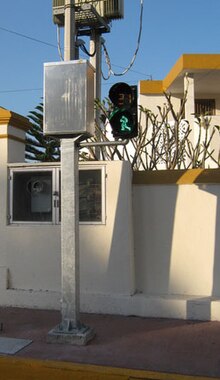Deep-cycle battery
The new technologies are also beginning to become common in the same form factors as automotive lead–acid batteries, although at a large price premium.
The reinforcement of absorbed glass mat separators helps to reduce damage caused by spilling and jolting vibrations.
The term flooded is used because this type of battery contains a quantity of electrolyte fluid so that the plates are completely submerged.
[8] Although still much more expensive than traditional lead–acid, a wide range of rechargeable battery technologies such as lithium-ion are increasingly attractive for many users.
According to BCI, the plastic cases, lead plates, sulfuric acid, solder, and other metals are 100% recovered for reuse.
BCI says that, industry wide, there is a greater than 98% rate of recovery on all lead acid batteries sold in the United States, resulting in a virtually closed manufacturing cycle.


